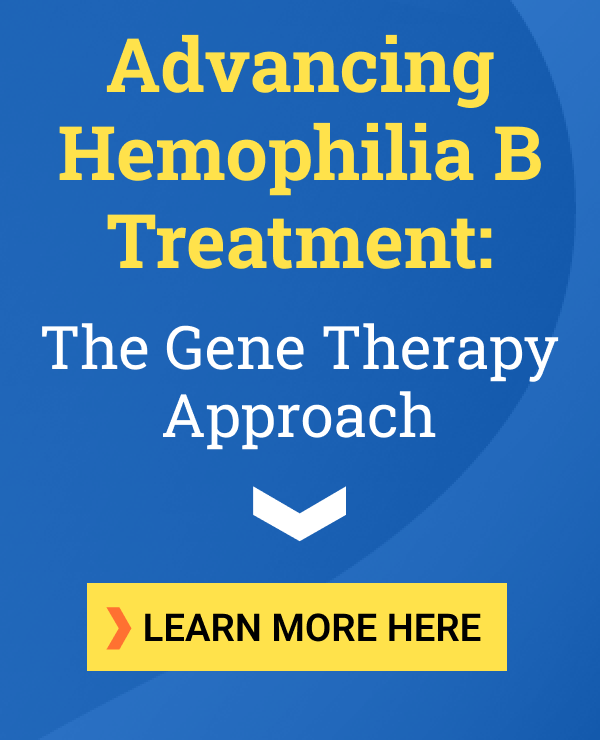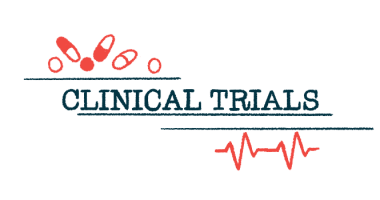Healthcare costs similar for patients on Adynovate, Eloctate: Study
Majority of healthcare costs for all patients were due to prescription drug costs

Healthcare costs are comparable for male patients with hemophilia A who are treated with either Adynovate (rurioctocog alfa pegol) or Eloctate (efmoroctocog alfa), according to a real-world study in the U.S.
“Results from this analysis may be used to inform product coverage and treatment decisions valuable for both payers and clinicians,” the researchers wrote.
The study “Healthcare costs among hemophilia A patients in the United States treated with rurioctocog alfa pegol (FVIII-PEG) or antihemophilic factor (recombinant), FC fusion protein (rFVIIIFc) using real-world data,” was published in the Journal of Medical Economics.
The work was funded by Takeda Pharmaceuticals, which markets Adynovate. Eloctate is sold by Sanofi, which was not involved with this study.
Hemophilia A is caused by reduced function of the clotting protein factor VIII (FVIII). A standard treatment is replacement therapy, which basically works by administering a lab-made working version of this protein into the body.
This can be used both for on-demand treatment of bleeds and as a prophylactic, or preventive, approach, involving a scheduled administration.
Therapies allow for less frequent dosing when compared with older replacement therapies
Adynovate and Eloctate are extended half-life (EHL) replacement therapies containing a FVIII version that’s been modified to last longer in the body, allowing less frequent dosing relative to older replacement therapies. In particular, Adynovate has a modification called PEGylation, while Eloctate provides a clotting factor that is a Fc fusion protein.
A team led by scientists at Takeda conducted a retrospective analysis of 2016-2021 insurance data aiming to compare healthcare costs for hemophilia A patients on either of these two commonly used replacement therapies.
“A comparative evaluation of direct costs and utilization associated with these two treatments using [real-world evidence] are lacking and needed to inform both payers and clinicians when making treatment and coverage decisions,” the researchers wrote.
Insurance data came from Merative MarketScan Commercial and Medicaid databases. Medicaid is the government program that provides insurance to low-income people in the U.S.
The analysis included data on 131 male patients treated with Adynovate and 204 male patients given Eloctate. All had six months of data before and after the earliest time point of reported treatment. Data strongly suggested they were on prophylactic treatment and had no inhibitors, or antibodies, against the delivered lab-made clotting factors.
A little more than half of the patients had commercial insurance, while the rest were insured through Medicaid. Mean age ranged between 20.5 and 24.4 years in the two groups with commercial insurance, and between 14.9 and 17.5 years in the two groups on Medicaid.
“There were no significant differences in hemophilia-related [health] conditions between treatment groups in the Commercial and Medicaid [groups],” the team wrote.
Results showed that the usage of healthcare resources were similar for patients given Adynovate or Eloctate. The proportion of patients with at least one inpatient admission ranged from 7.7% to 10.6% with Adynovate and from 7.2% to 7.5% with Eloctate, while that of emergency visits was between 31.8%-35.4% with Adynovate and 25.2%-45.2% with Eloctate.
“Outpatient office visits and pharmacy prescriptions were common [higher than 85%] among all patient groups,” the researchers wrote.
Comparable findings for healthcare costs
The team also found comparable findings in terms of total healthcare costs for patients on either therapy.
In statistical models adjusted for potential influencing factors, the average monthly total healthcare cost per patient tended to be higher with Eloctate than with Adynovate: $5,215 higher in commercially insured patients and $3,895 higher in Medicaid-insured patients.
However, these differences did not have statistical significance, meaning it’s mathematically plausible that this difference is due to random chance.
For patients on either therapy, most healthcare costs were due to the cost of prescription medications, accounting for 61.2%-70.7% of the total costs in the commercial insurance group and 93.6%-98.8% in the Medicaid group.
In addition, hemophilia-related healthcare costs accounted for more than 94% of the total costs in all groups.
The mean weekly dose of Adynovate was higher than Eloctate in Commercial (6,047 IU vs. 4,892 IU), but lower than Eloctate in Medicaid (5,549 IU vs. 7,228 IU). None of these differences reached statistical significance, indicating that dosing of the therapies also was comparable.
“The mean all-cause total costs and treatment dosing were not significantly different … in patients treated with [Adynovate] and [Eloctate],” the researchers wrote. “These updated analyses examining the economic burden associated with specific EHL FVIII therapies in both Commercial and Medicaid represent a wider patient population compared with previous work.”
Among the study’s limitations, the team noted that insurance data aren’t collected for research purposes, and that the cost analysis was limited to patients with commercial and Medicaid insurance.
“Consequently, these results may not be generalizable to hemophilia A patients with other insurance or without health insurance coverage,” the team wrote, adding “further research is needed to quantify the indirect cost burden (of both patients and caregivers) to access the full economic burden of disease.”








